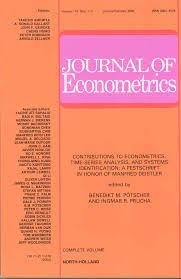
Bräuning, F. and Koopman, \.J. (2020). The dynamic factor network model with an application to international trade Journal of Econometrics, 216(2):494--515.
-
Affiliated authorsFalk Bräuning, Siem Jan Koopman
-
Publication year2020
-
JournalJournal of Econometrics
We introduce a dynamic network model with probabilistic link functions that depend on stochastically time-varying parameters. We adopt a blockmodel framework and allow the high-dimensional vector of link probabilities to be a function of a low-dimensional set of dynamic factors. The resulting dynamic factor network model has a basic and transparent structure. However, parameter estimation, signal extraction of stochastic loadings and dynamic factors, and the econometric analysis generally are intricate tasks for which simulation-based methods are needed. We provide feasible and practical solutions to these challenging tasks, based on a computationally efficient importance sampling procedure to evaluate the likelihood function. An extensive Monte Carlo study demonstrates the performance of our method in finite samples, both under correct and incorrect model specifications. In an empirical study, we use the novel framework to analyze global patterns of banana exports and imports. We identify groups of heavy and light traders in this highly active commodity market and their time-varying trade probabilities.